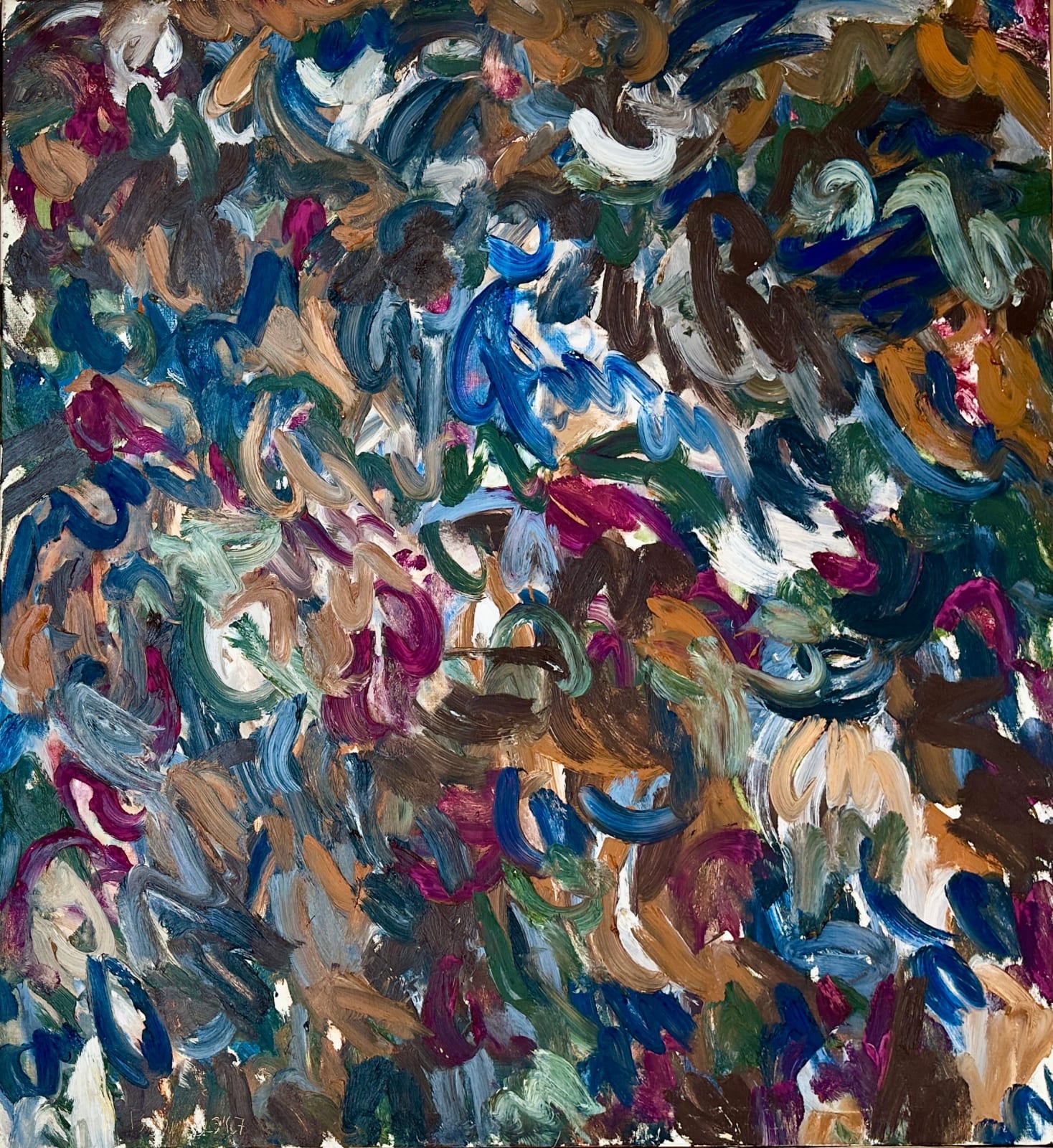Berenice Sydney British, 1944-1983
Untitled No.5, 1967
oil on canvas
170 x 150 cm
Berenice Sydney (1944–1983) developed a distinctive visual language that fused geometric structure with rhythmic lyricism. Abandoning her earlier experiments with Cubism and Fauvism, she fully embraced abstraction in the late...
Berenice Sydney (1944–1983) developed a distinctive visual language that fused geometric structure with rhythmic lyricism. Abandoning her earlier experiments with Cubism and Fauvism, she fully embraced abstraction in the late 1960s, dedicating herself to an intuitive yet highly studied exploration of colour, form, and movement. Her rhythmic and harmonious compositions reflect her lifelong connection to dance, ballet, and music, which she studied from an early age. Each canvas becomes a site of motion and energy, where colour and line rise, fall, and intertwine in dynamic interplay.
Sydney approached her practice with scholarly rigour. Her notebooks reveal deep study of Modernist pioneers - Kandinsky, Sonia and Robert Delaunay, Sophie Taeuber-Arp, Mondrian, Theo van Doesburg, and Alberto Magnelli - alongside the principles of Neo-Plasticism, Orphism, Cubism, and Geometric Abstraction. Yet, her process remained instinctive and physical, driven by an acute dedication to her practice. As she described in an artist statement from 1974: “I become totally absorbed in the very slow meticulous process of directing the colour onto the canvas. What is important is the living painting. When I’ve finished one, I start another. Another two months of complete involvement with colour and movement.” This immersion speaks to the meditative intensity of Sydney’s process, where each work emerges over months of careful orchestration, embodying what she called the ‘living’ quality of painting - dynamic, breathing, and in constant flux.
Sydney's oeuvre spans multiple media, including painting, printmaking, and costume design. Her artworks are included in over a hundred important private and public collections around the world, including Tate (London), British Museum (London), Victoria & Albert Museum (London), Ashmolean Museum (Oxford), Bibliotèque Nationale (Paris), Bibliothèque Royale (Brussels), Galleria D'Arte Moderna (Bologna), Uffizi Gallery (Florence), Smithsonian Institution (Washington, D.C.), Museum of Modern Art (Buenos Aires), Philadelphia Museum, and the Brooklyn Museum (New York).
Sydney approached her practice with scholarly rigour. Her notebooks reveal deep study of Modernist pioneers - Kandinsky, Sonia and Robert Delaunay, Sophie Taeuber-Arp, Mondrian, Theo van Doesburg, and Alberto Magnelli - alongside the principles of Neo-Plasticism, Orphism, Cubism, and Geometric Abstraction. Yet, her process remained instinctive and physical, driven by an acute dedication to her practice. As she described in an artist statement from 1974: “I become totally absorbed in the very slow meticulous process of directing the colour onto the canvas. What is important is the living painting. When I’ve finished one, I start another. Another two months of complete involvement with colour and movement.” This immersion speaks to the meditative intensity of Sydney’s process, where each work emerges over months of careful orchestration, embodying what she called the ‘living’ quality of painting - dynamic, breathing, and in constant flux.
Sydney's oeuvre spans multiple media, including painting, printmaking, and costume design. Her artworks are included in over a hundred important private and public collections around the world, including Tate (London), British Museum (London), Victoria & Albert Museum (London), Ashmolean Museum (Oxford), Bibliotèque Nationale (Paris), Bibliothèque Royale (Brussels), Galleria D'Arte Moderna (Bologna), Uffizi Gallery (Florence), Smithsonian Institution (Washington, D.C.), Museum of Modern Art (Buenos Aires), Philadelphia Museum, and the Brooklyn Museum (New York).
2
of
2



